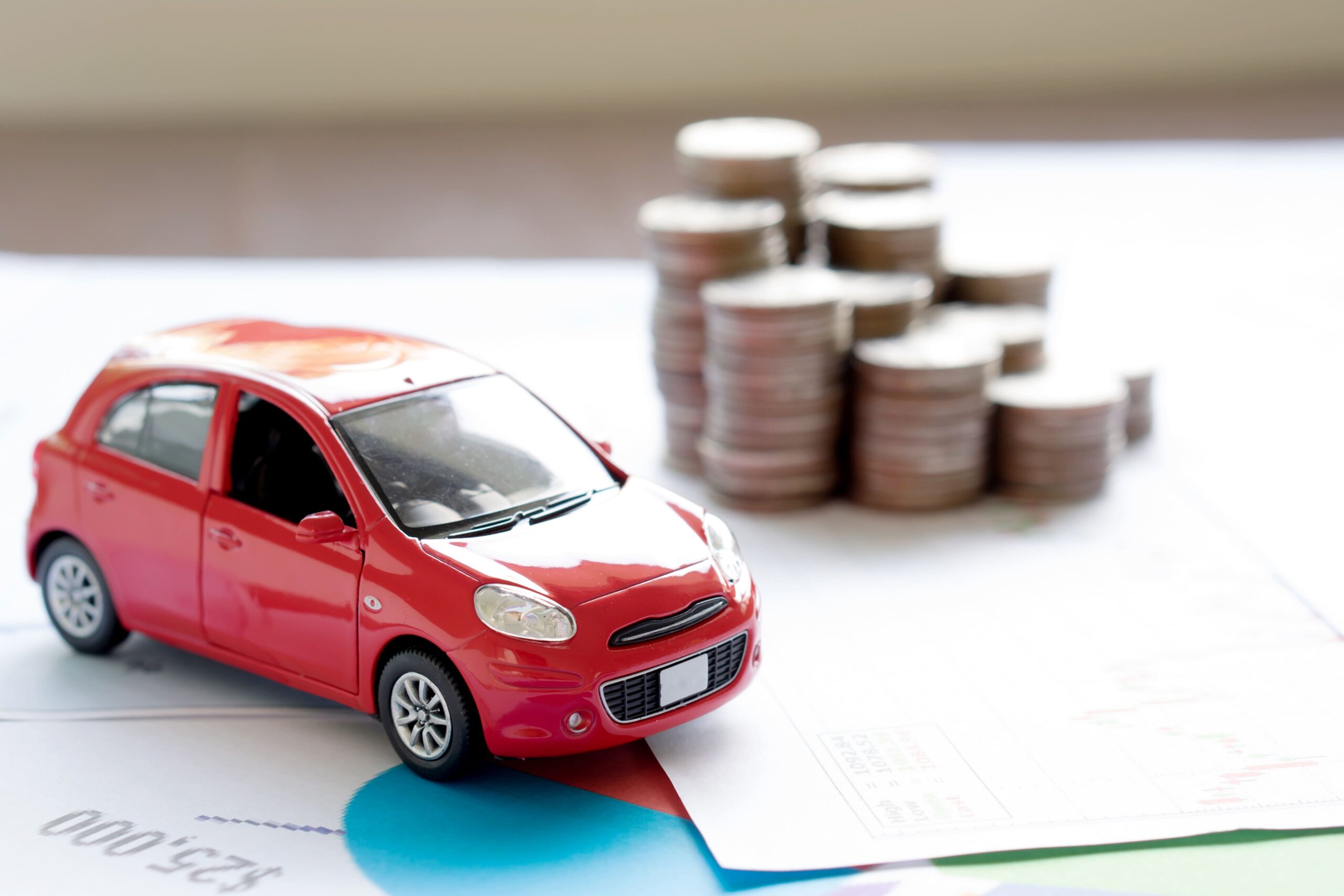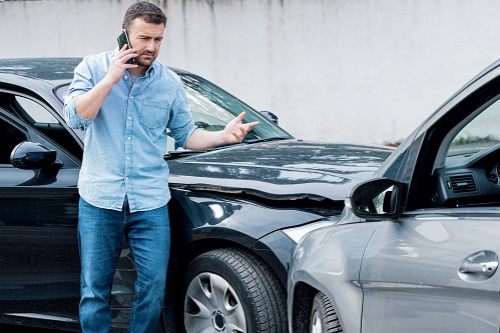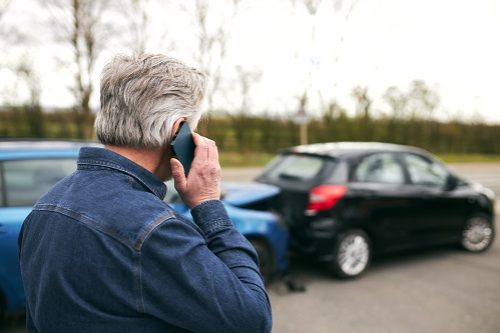- How much coverage do you need in California?
- How much is car liability insurance in California?
- What additional coverages should you consider?
- How to choose auto insurance coverage
- How to calculate car insurance coverage in California
- Compare auto insurance rates by city in California
- Car insurance premium trends in California
- Frequently asked questions
- Compare state minimum limits in California with other states
How much coverage do you need in California?
Every state has slightly different car insurance requirements. California minimum auto insurance coverage requires 30/60/15 in liability coverage to pay for bodily injuries and property damages you cause in an accident. California car insurance requirements also include:
- 30/60/15 in liability coverage to pay for bodily injuries and property damages you cause in an accident.
While collision and comprehensive coverages are not required by law, they are highly recommended. Collision insurance covers damages to your car if you cause an accident. Comprehensive coverageComprehensive coverage helps pay for damage to your car caused by events other than a collision, such as theft, fire, vandalism, or natural disasters. It is subject to a deductible. pays for vehicle damage unrelated to an accident, like hail, theft, vandalism and acts of nature. Both are required if you have a loan or lease on your vehicle.
How much is car liability insurance in California?
The average cost of a liability-only car insurance policy in California is $551 for a policy that meets state minimum requirements.
Higher auto insurance liability limits will cost more. At increased limits of 50/100/50, the average cost of liability insuranceLiability insurance covers sums that an insured becomes legally obligated to pay because of bodily injuries or property damage, or financial losses caused to other people. in California is $864.
What additional coverages should you consider?
Although not required by law, you may need or want these other coverages:
- Comprehensive coverage, which covers damage to your car due to a non-collision event. This coverage is required if you have a loan or lease agreement.
- Collision coverage, which covers damage to your car from a collision where another driver’s liability coverage doesn’t apply. This coverage is required if you have a loan or lease agreement.
- Rental reimbursement, which pays for a rental car when your car is being repiared due to a covered loss.
- Roadside assistance, which provides help for things like dead batteries and flat tires, and also includes towing.
- Gap insurance, which covers the difference between your car’s value and what you owe on your loan after a total loss.
How to choose auto insurance coverage
Your auto insurance policy should begin with California minimums, and build from there. Consider the following:
- Is the minimum liability enough to protect you? For most people, the answer is no. Increase your liability limits to protect your assets. Expert auto insurance coverage recommendations are that you carry at least 100/300/100.
- Do you have a car loan, and can you afford to repair or replace your vehicle on your own? If the answer to the first is yes, you need comprehensive and collision. If the answer to the second is no, you also need comprehensive and collision coverage.
- How much can you afford to pay out of pocket if you file a claim? Choose a deductible you can afford, bearing in mind that a lower deductible means higher premiums.
- What would happen if you were involved in an accident with a driver who is uninsured or carries only state minimum coverage, and it’s not enough to cover your damages? Uninsured/underinsured motorist coverage protects you in this scenario.
- Do you have access to a second car or public transportation? If not, consider adding rental reimbursement.
- Do you have roadside assistance through your car’s manufacturer or a membership like AAA? If not, consider adding it to your policy; it’s a low-cost way to ensure you won’t be stuck on the side of the road.
How to calculate car insurance coverage in California
To use the California car insurance calculator:
- Enter your ZIP code
- Choose whether you own, finance, or lease your vehicle
- If you finance or lease your car, you may need GAP coverage if it’s less than a year old or if you put down less than 20% of the value
- Choose if you want the lowest rates or the best protection
- Enter your net worth to determine if you can pay for repairs or a replacement yourself
- Choose if you and your passengers have health insurance to indicate if you need medical payment or personal injury protection
If you choose the lowest rates, the calculator shows the least coverage that will meet your needs. On the other hand, the best coverage choice shows the coverage levels that provide the best possible protection.
“Many financial experts recommend carrying at least $100,000 per person and $300,000 per occurrence- commonly expressed as "100/300." Consider what assets you have to protect and what you can afford when deciding how much to purchase,” Walker says.
Compare auto insurance rates by city in California
Auto insurance rates vary not just by state, but also by city. Cities have different levels of risk based on factors like accident rates, claimAn insurance claim is a request you make to your insurance company for coverage after your car is damaged or you have an accident. You can file a claim online, by phone, or in writing. costs, weather and more. That means where you live in California will impact what you pay. Below, we've gathered California car insurance rates by city for comparison.
| City | Annual insurance premium |
|---|---|
Hayward | $2,546 |
Irvine | $2,502 |
Los Angeles | $3,149 |
Sacramento | $2,665 |
San Diego | $2,324 |
San Jose | $2,406 |
Temecula | $2,356 |
Car insurance premium trends in California
Car insurance rates change regularly, influenced by changes in the cost of repairs, claim rates and other factors. Recent years have seen car insurance rates rise across the country, but not every state has seen the same increases.
We've tracked car insurance premiumThe payment required for an insurance policy to remain in force. Auto insurance premiums are quoted for either 6-month or annual policy periods. trends in California to show you how things have changed and help you prepare for potential changes in the future. Take a look at the chart below.
Frequently asked questions
Is state minimum insurance enough in California?
State minimum coverage is generally not enough to protect you in the event of even a moderately serious accident. Medical bills can climb quickly, and property damage can easily exceed state minimum limits.
Why do I need comprehensive & collision coverage?
Your loan or lease may require it, but even if you own your car, comprehensive and collision coverage are the only way to ensure your car is covered in the event of an at-fault accident, single-vehicle accident, theft, vandalism or any other damage to your car where another driver isn’t at fault.
Compare state minimum limits in California with other states
 You might also be interested in
You might also be interested in- Tesla insurance in California for 2025
- California landlord insurance for 2025: What you need to know
- California car insurance laws and requirements: What is changing in 2025
- California DUI and insurance: How much does a DUI raise your insurance?
- Speeding ticket calculator in California
- SR-22 insurance in California
- Non-owner car insurance in California: Best and cheapest companies
- California gap insurance: Everything you need to know
- Low-income car insurance in California: What you need to know
- California car insurance guide



